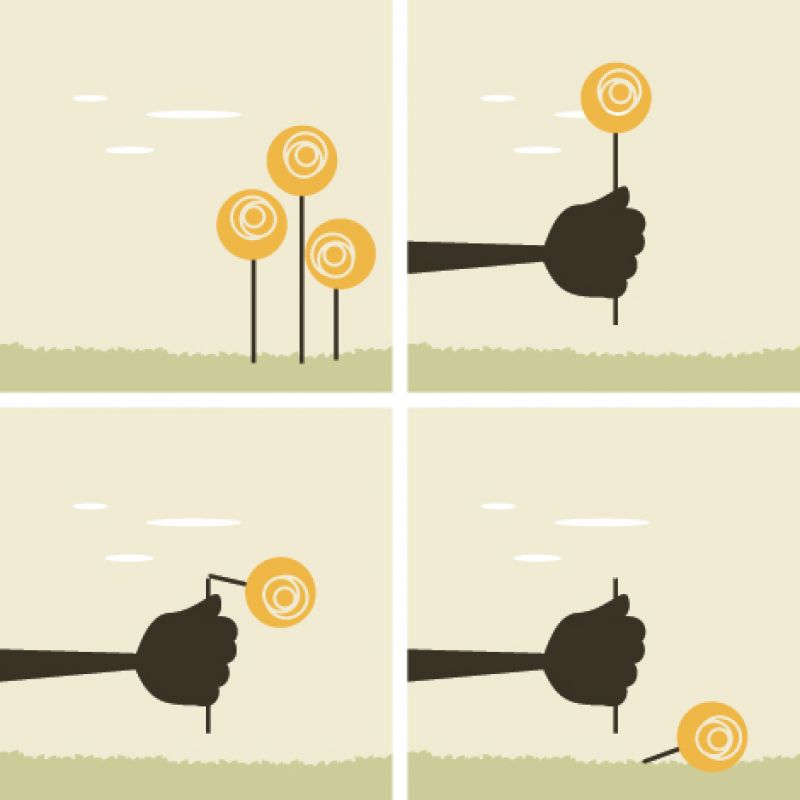
I avoid my neighbors, they of the lush lawn and trimmed bushes. I know they’re next door judging my yard—and me. When my wife and I and our young son first moved into our house back in the ’90s, the lawn was like a bright emerald, the bushes manicured, the flowers blooming. But, now, peering through my porch’s dirty jalousie windows, I see a yard so misshapen and brown as to make an Okie cry and light out for greener pastures.
I recently asked my neighbor for a list of the things he hates about my yard. (I asked him to differentiate it from his list of top reasons for hating having me as a neighbor in the first place, which would likely be innumerable.) Here’s what he came up with:
First, the side yard that faces into his bedroom windows, where he looks out to meet the day, was “unkept,” said he, an architect with an eye for design. I, a writer with an eye for grammar, asked if he really meant “unkempt.” He said no, that was too “fancy” a word for that godforsaken spit of land where my failed attempt at a rock-walking path devolved into a lava field with jagged rocks jutting upward at ankle-shearing angles.
Second, he said my front yard shrubs were “overgrown.” In his defense, he’s absolutely correct. I own clippers, but not the desire to use the darn things. Third was the lost potential of my backyard, now an overgrown collection of weeds and three—make that four—year’s worth of fallen leaves.
It wasn’t always this way—the yard, that is. It was beautiful when we bought our home, second only on our favorites list to its lovely inlaid floors. Monkey grass danced along the front walkway; tulips swayed in a neat stone circle beneath a gas lamp standing guard nearby; soft breezes folded a swath of grass on the other side of the house that screamed “private reading nook.” And like my youth, they’re all gone now.
In my defense, I can’t grow grass of any kind. In college, I “experimented” with hydroponic methods, and the result was still something so brown it wouldn’t pass for oregano. And the Lord knows I have tried since—Zoysia, fescue, rye; you name it, I’ve killed it.
Last spring, when the air was slightly warmer than the soil, I nearly did myself in by literally hand-tilling my postage stamp of a front yard and spreading seed in hopes of getting root systems to begin their burrowing. “At least I can see some green,” my neighbor offered weakly. “That’s better than the last three—make that four—years.”
Cold comfort, considering the green shoots were simply the early signs of invasive weeds, lurking to choke whatever grass seed I once again laid down. I can’t do what the Great Plains has accomplished without even trying. There, grasses grow so high that they obscure major portions of a buffalo. Me? I can’t even get a mossy dusting sufficient to cover my cat Gary’s paws.
Five thousand dollars of sod bit the dust last summer; mainly because I laid it upside down. The only non-weed that has sprung up in my yard (that I had a hand in) is the tacky, movable basketball goal than anchors our front walk. Still, I try hard to keep up with the Joneses. They know all the names of their plants: ‘George Lindley Taber’ azaleas, French marigolds (Tagetes patula, they hiss), and so on. When asked what I’ve planted, I lie and make up names: “Oh, that’s ‘Steve,’ and over there is ‘Ellen.’”
This winter, when I saw my neighbors scurrying around their yards, tenting their plants in advance of a morning frost, I followed suit. Unfortunately, all my plants are inside. And plastic. Still, I killed a few.
So I’ve turned to the experts—the lady at Lowe’s, the golf course superintendent, and my ever-informative neighbor—with no luck. Next, I suppose I will have to consult an exorcist. But through my research for yard improvement, I have learned about people in the desert who, like the Brady Bunch, replaced their yards with Astroturf and fake vegetation.
Two words: pure genius!